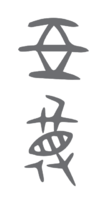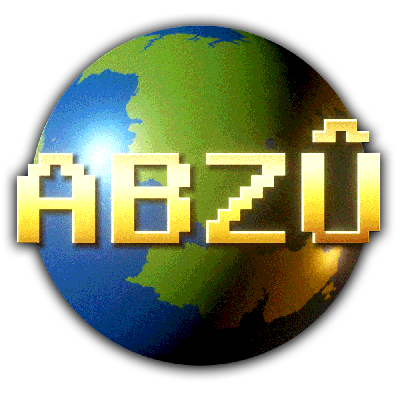Kwang characters: Difference between revisions
No edit summary |
|||
| Line 6: | Line 6: | ||
=== Divinatory script === | === Divinatory script === | ||
The '''divinatory script''', the earliest attested ancestor of Kwang characters, consists of around several thousand inscriptions found on relics from the Wa-Hiang period. It is thought that the earliest inscriptions evolved from an earlier pictographic stage. | The '''divinatory script''', the earliest attested ancestor of Kwang characters, consists of around several thousand inscriptions found on relics from the Wa-Hiang period. It is thought that the earliest inscriptions evolved from an earlier pictographic stage. These inscriptions were often religious in nature, and sometimes included important information about court culture during the Hiang era. | ||
[[File:Wahiangscript.png|thumb|204x204px|The characters for 'Wa' and 'Hiang' in the divinatory script.]] | [[File:Wahiangscript.png|thumb|204x204px|The characters for 'Wa' and 'Hiang' in the divinatory script.]] | ||
=== High script === | === High script === | ||
The '''high script''', known contemporarily as the '''regular script''', is the standardized form that was developed in the Lya Dynasty | The '''high script''', known contemporarily as the '''regular script''', is the standardized form that was developed in the Lya Dynasty, and subsequently been treated as the standard and most formal style of Kwang calligraphy. Due to the Qonklese lexicography tradtion being developed at this time, dictionaries to this day continue to organize their entries based on high script forms. | ||
=== Clerical script === | |||
The '''clerical script''', as the name suggests, was born out of a clerical tradition to simplify high script forms, which were notoriously time-consuming to write. | |||
Revision as of 17:31, 23 September 2024
Kwang characters, or Quoncograms, are logographs used to write the Kwang languages and others from regions that had or is still under the Qonklese cultural sphere.
Kwang characters, ironicallly, has since been abolished in Qonklaks in favour of the phonetic Qonklese alphabet, whose adoption led to an unprecidented boost in literacy in said country.
History
Divinatory script
The divinatory script, the earliest attested ancestor of Kwang characters, consists of around several thousand inscriptions found on relics from the Wa-Hiang period. It is thought that the earliest inscriptions evolved from an earlier pictographic stage. These inscriptions were often religious in nature, and sometimes included important information about court culture during the Hiang era.

High script
The high script, known contemporarily as the regular script, is the standardized form that was developed in the Lya Dynasty, and subsequently been treated as the standard and most formal style of Kwang calligraphy. Due to the Qonklese lexicography tradtion being developed at this time, dictionaries to this day continue to organize their entries based on high script forms.
Clerical script
The clerical script, as the name suggests, was born out of a clerical tradition to simplify high script forms, which were notoriously time-consuming to write.
